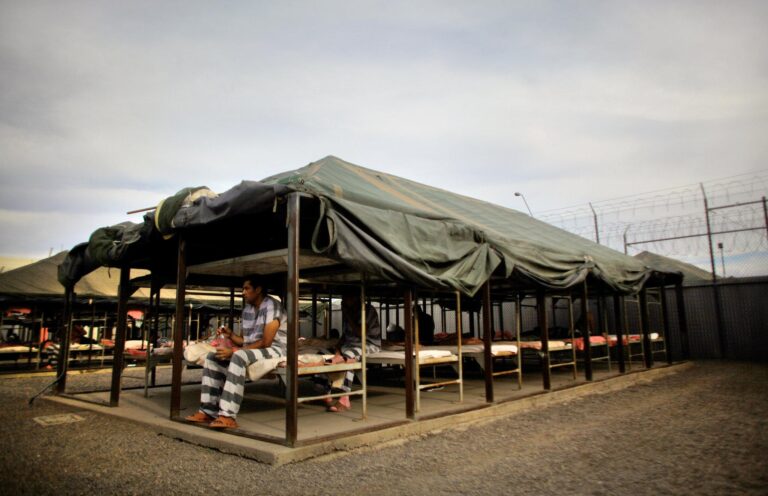For nearly a quarter of a century, ArizonaŌĆÖs Tent City detention facility operated under intense scrutiny and controversy, drawing comparisons to a ŌĆ£concentration campŌĆØ due to its harsh conditions and outdoor incarceration model. Despite mounting criticism from human rights advocates, legal challenges, and shifting political landscapes, Tent City remained open for 24 years. This article examines the complex factors that contributed to the facilityŌĆÖs prolonged existence, including state politics, budget considerations, public safety arguments, and the evolving landscape of criminal justice in Arizona.
The Origins and Evolution of Tent City in Arizona
Established in the early 1990s amid rising immigration enforcement, Tent City in Maricopa County quickly became a symbol of ArizonaŌĆÖs hardline approach to incarceration. Initially designed as a temporary holding facility for overflow prison populations during construction delays, the detention camp evolved into a semi-permanent fixture due to a complex blend of political will, budget considerations, and public opinion. Over two decades, it housed thousands of detainees, predominantly from marginalized communities, under harsh conditions that frequently drew criticism from human rights organizations.
The endurance of Tent City can be attributed to several key factors:
- Political support: Local officials championed the facility as a tough-on-crime measure, bolstering tough sentencing laws and immigration crackdowns.
- Economic incentives: The nighttime outdoor incarcerations were touted as cost-effective, reducing heating and cooling expenses compared to traditional prisons.
- Public perception: Framing Tent City as a deterrent shaped community attitudes, sustaining demand for its continued operation despite controversies.
This unique combination allowed Tent City to not only persist but to expand its role, sparking a wider debate on the ethics and efficacy of prolonged detention under extreme environmental circumstances.
Living Conditions and Human Rights Concerns Inside the Facility
For over two decades, Tent City operated under conditions that sparked widespread outrage and condemnation from human rights organizations and activists alike. Detainees were confined in overcrowded, open-air tents exposed to the extremes of the Arizona desert climate, where summer temperatures routinely soared above 110┬░F (43┬░C). Basic necessities such as adequate sanitation, clean drinking water, and proper medical care were reported as severely lacking, leading to deteriorating physical and mental health among inmates. The facilityŌĆÖs design and operational protocols frequently blurred the line between correctional containment and punitive isolation, raising critical ethical questions about the treatment of incarcerated individuals.
Human rights groups repeatedly called attention to:
- Substandard living conditions, including poor ventilation and inadequate shelter
- Restricted access to legal representation and family visits
- Insufficient mental health services and failure to address trauma
- Violations of international standards on prisoner treatment
| Issue | Reported Impact |
|---|---|
| Extreme Heat Exposure | Heatstroke, dehydration |
| Overcrowding | Increased violence, stress |
| Poor Sanitation | Illness, infection outbreaks |
Despite these concerns, Tent City remained operational for 24 years, sustained by a mixture of political will, budget considerations, and a punitive approach to incarceration. The persistence of such conditions sparked continuing public debate on the balance between law enforcement, fiscal priorities, and fundamental human rights, highlighting the urgent need for systemic reform in ArizonaŌĆÖs correctional policies.
Political and Legal Factors Sustaining Tent CityŌĆÖs Operation
For nearly a quarter-century, Tent City persisted largely due to a combination of political endorsement and legal frameworks that shielded its continued operation. Arizona state officials, reflecting tough-on-crime and fiscal conservatism stances, consistently defended the facility as a cost-effective solution to overcrowding in conventional prisons. This unwavering support was bolstered by legislation that prioritized budgetary constraints over human rights considerations, enabling a punitive approach to detention even amid growing criticism. Lawmakers repeatedly approved funding streams, turning a blind eye to the mounting evidence of inhumane conditions, emphasizing political capital gained from a hardline stance on incarceration.
Moreover, the legal environment created substantial barriers to shutting down Tent City. Key statutes granted exceptional autonomy to county sheriffs, effectively reducing oversight and limiting judicial intervention. Civil rights lawsuits faced prolonged delays or dismissals due to procedural hurdles and state immunity doctrines, thereby insulating the detention center from accountability. The table below summarizes the core political and legal factors that protected Tent City:
| Factor | Impact |
|---|---|
| State legislative backing | Regular budget approval ensured continued funding |
| Sheriff autonomy | Limited external oversight allowed operational independence |
| Legal immunity provisions | Shielded facility from many civil rights lawsuits |
| Political rhetoric | Framed Tent City as necessary for public safety |
Calls for Reform and Alternatives to Prolonged Detention
Growing public outcry and mounting evidence of human rights violations have driven activists, legal experts, and policymakers to demand sweeping changes in Arizona’s detention policies. Many argue that the prolonged confinement of detainees in harsh conditions not only violates basic human dignity but also exacerbates mental health issues and systemic injustices. Calls for reform emphasize alternatives that prioritize rehabilitation, community support, and faster legal processing over indefinite detention. These voices contend that a shift towards humane treatment would reduce both the financial burden on the state and the long-term social costs.
Reform advocates propose several key strategies:
- Implementing community-based supervision programs as alternatives to incarceration
- Expanding access to legal representation and expedited hearings to minimize detention duration
- Investing in mental health and social services tailored to detainees’ needs
- Advancing policy reforms to end indefinite detention and ensure transparent oversight
| Proposed Reform | Expected Benefit | Implementation Challenge |
|---|---|---|
| Community Supervision | Lower recidivism rates | Funding and infrastructure |
| Expedited Legal Processes | Reduced detention time | Judicial system backlog |
| Mental Health Services | Improved detainee well-being | Resource allocation |
Insights and Conclusions
The prolonged operation of ArizonaŌĆÖs Tent City, dubbed a “concentration camp” by critics, underscores the complexities and controversies surrounding immigration detention in the United States. For nearly a quarter of a century, the facility symbolized broader debates over border security, human rights, and the treatment of detainees. As policymakers and advocates continue to grapple with these issues, the legacy of Tent City serves as a stark reminder of the urgent need for comprehensive immigration reform and humane detention practices.







